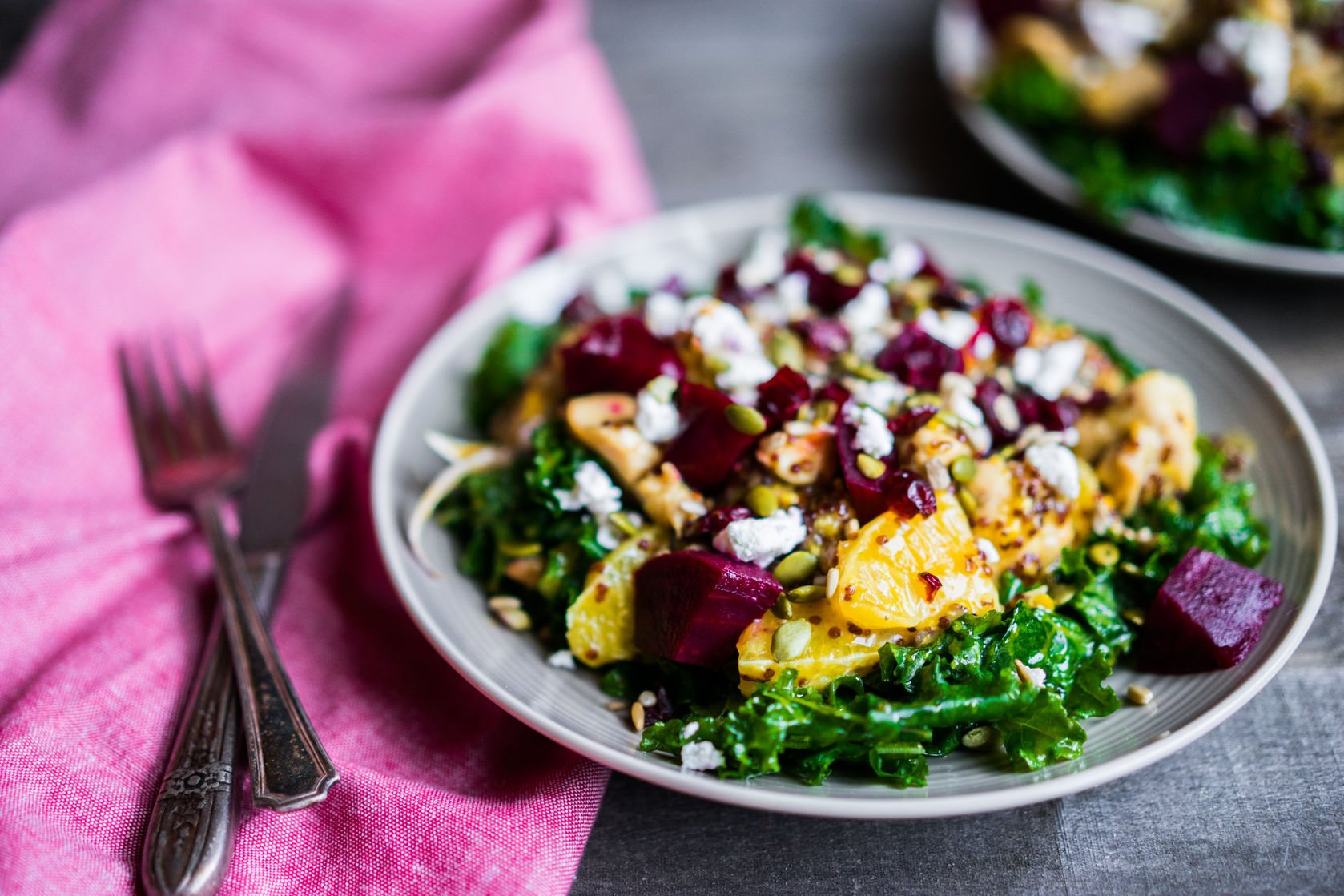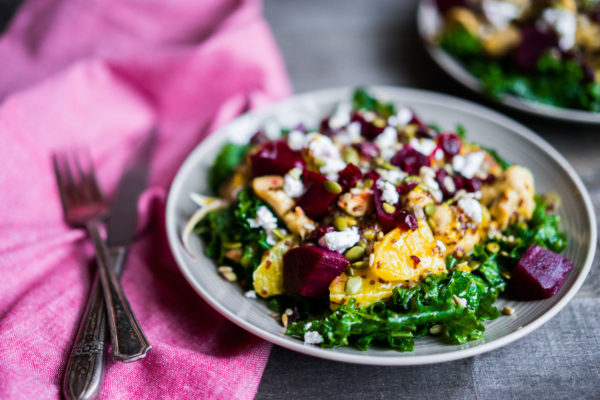New Year’s Healthy Food Resolutions
New Year’s resolutions are birthed from good intentions, but rarely do they last. According to Forbes Magazine, University of Scranton researchers found that only 8% of people actually achieve their New Year’s Goals. It comes as no surprise that the #1 ranked resolution for 2017 was related to weight loss/ healthy eating. A desire to get healthy is a great goal to have. Unfortunately, most don’t know how to take the steps to make their New Year’s goals a reality. This year, I’m suggesting a different approach. I can’t take credit for this idea. It comes from listening to the podcast, The Sporkful.
On their New Year’s episode, they provided clips from listeners sharing the healthy foods that they resolved to eat more of in the coming year. They were making new year’s healthy food resolutions!
Not every food that people resolved to eat more of was a healthy food, such as pizza, so this isn’t a license to over-indulge in foods that could present unwanted effects such as weight gain, increased cholesterol, etc. Instead, resolve to eat more healthy foods. Be specific. These can be foods that you love and used to eat all the time but have stopped, or new foods that you’ve always wanted to try.
The difference with a specific new years healthy food resolution is that it is realistic. Rather than just “eating healthy,” you are giving yourself a measurable goal.
It’s much easier to stick to a healthy food goal when you know exactly what you’re shooting for.
This year, I resolve to eat more of several dishes/food items.
All of my choices provide nutritional benefits, which I will explain, but there is also a very practical reason why I am choosing to consume more of these foods. Read on to find out my picks!
Curry
More specifically, I would like to eat more Indian Chicken Curry.
- There isn’t a much easier way to maximize my intake of some powerful herbs/spices such as turmeric, ginger, cinnamon, cardamom, coriander and garlic.
- I’ve written a lot about the benefits of turmeric for reducing inflammation and providing disease fighting benefits due to its antioxidant powder.
- Ginger is soothing, aiding in digestion and also provides potential relief for stressed muscles. Cinnamon has potential blood-sugar-lowering benefits.
I haven’t written much about garlic or cardamom, so let me fill you in. Garlic has been used for ages, just as turmeric and cinnamon, for a multitude of pharmacological benefits. Today, garlic is used for treatment of atherosclerosis (hardening of the arteries), high blood pressure, and high cholesterol just to name a few. Additionally, garlic has potent antimicrobial properties thanks to, accilin, a sulfur-containing compound that is formed at levels of approximately 3 to 5 mg/g of fresh clove. This has been used to treat candida overgrowth. Lastly, adding garlic to dishes (such as curry) has been shown to reduce the severity of cold and flu symptoms.
Cardamom, a lesser-known spice, has been shown to have protective effects against gastrointestinal lesions associated with ulcers, provides benefits for lowering blood pressure and is also an excellent source of cardio-protective antioxidants. If you’re looking for ways to decrease inflammation, curry is your dish.
Just like everyone else, I get busy. At the end of the day, I don’t always feel like cooking. Curry is an easy dish to prepare in bulk. This means that I have leftovers for days. The easier that you make in on yourself to keep your new years healthy food resolutions, the better your chances are of keeping them! If I think that I’ll get sick of the dish before I finish it (doubtful), I can always freeze half to whip out on a really busy evening. Unlike some leftovers, curry gets better with age. The spices have a chance to infuse and it’s even more flavorful the next day.

Start your New Year’s Healthy Food Resolutions off on the right start! Try a healthy and tasty salad topped with beets!
Beets
Recently, a lot of research has been devoted to the healthy benefits of beets.
- Beetroot is rich in nitrates, which our bodies break down to nitric oxide (NO).
- Nitric oxide is responsible for a host of heart-healthy benefits, most specially for lowering blood pressure.
- Beetroot is also an excellent source of folate, which is of key importance to pregnant women and those of childbearing age, as well as fiber and potassium.
- Like most dark, leafy greens, beet greens provide vitamins A and K, potassium and magnesium.
- If you’re looking for a good way to get in calcium, 1 cup of cooked beet greens can help!
Research has also found that NO found in beet juice may improve performance for athletes. It is thought to do this by decreasing the amount of oxygen needed during exercise, increasing blood flow to exercising muscles and extending the amount duration of exercise before reaching exhaustion.
The magnesium content in beet greens can also help athletes recover by promoting muscle relaxation and sleep.
Beets are great additions to salads, but for me, they are so much more! You see, I love marinara sauce (made from tomatoes), but it doesn’t love me. My body does not tolerate nightshades well at all. Thankfully, I can still make my own versions of marinara or other tomato-based sauces using beets and another vegetable such as carrots. It might sound crazy but when you add oregano, garlic, basil etc. the taste is pretty darn close! It’s not the most convenient item to prepare, but it definitely expands my meal options. To make it easier, I prepare a large batch (several large mason jars) and freeze them for later use.
Beets are very versatile and can jazz up any dish.
- Have them savory or sweet.
- I add them to quinoa, toss them into my traditional roasted veggies, bake with them (beet brownies), and sometimes, I roast them and eat them whole (just like an apple).
- If you do that, I suggest using golden beets so that your fingers and lips aren’t stained red. ☺
- If time is limited, beets can conveniently be purchased already steamed and peeled thanks to Love Beets.
With beets, you can really get the most bang for your buck because the entire beet plant (root + greens) is edible. This means less waste and more versatility to dishes. There are times when sautéed spinach just isn’t going to cut it for me. Beet greens offer a tasty, nutrient-packed alternative. The greens are also excellent additions to soups/stews.
Arugula
Arugula is a great way to help liven up the same old iceberg or romaine salads!
Adding new flavors to your ‘go-to’ meals can help spice up your same old routine. A small change to your regular salad can make lunch (and achieving your new year’s food resolutions) fun again!
- Arugula, like broccoli, cauliflower, Brussels sprouts and kale, is a cruciferous vegetable.
- Cruciferous veggies contain glucosinolates, which may provide cancer-protective benefits by helping the body get rid of carcinogens before they have a chance to damage DNA.
- Research also suggests that they may positively affect hormone activity in ways that inhibit the development of hormone-related cancers as well as help reduce the risk of colorectal and lung cancers.
- Other studies have found that sulforaphane, another compound in arugula, has potential as a pharmaceutical agent in cancer treatment.
If those are reasons enough to eat arugula, it is also a very easy way to get a boost of key vitamins and minerals. Vitamin A helps improve vision, Vitamin C boosts immune function, Vitamin K aids in blood clotting and strengthens bones. Arugula also packs potassium, magnesium, iron and calcium. Who would have thought that a flimsy little leafy green could do all that?
Salads are a go-to lunch for me because they’re extremely easy to prepare. They have to keep me fueled all afternoon so I don’t skimp on ingredients. I always add a variety of veggies in addition to avocado (healthy fat), a complex carbohydrate (ex: sweet potato or black rice) and a protein source. Sometimes, I do get tired of regular “mixed greens.” With a slight peppery essence, it is much more flavorful than chard, lettuce or spinach. It comes conveniently in the clear salad boxes, just like the mixed greens, which makes it easy to grab and toss into my lunch container. No additional washing or cutting necessary. If you’re not a salad person, add arugula to any pasta or sauté dish.
This is likely the easiest New Year’s Resolutions that I’ve made, and it’s one that I can confidently say I’ll keep! I encourage you to pick one or more nutrient-powerhouses and find ways to eat more of them. Happy eating! ☺
References:
http://annonc.oxfordjournals.org/content/early/2012/02/10/annonc.mdr604.short
http://www.arthritis.org/living-with-arthritis/treatments/natural/supplements-herbs/guide/turmeric.php
http://www.forbes.com/sites/dandiamond/2013/01/01/just-8-of-people-achieve-their-new-years-resolutions-heres-how-they-did-it/#1ddc0ae5304c
http://www.foodandnutrition.org/November-December-2015/Savor-Beets/
http://www.mdpi.com/2072-6643/7/4/2801/htm
https://www.ncbi.nlm.nih.gov/pmc/articles/PMC538912/
https://www.ncbi.nlm.nih.gov/pubmed/16335787
https://www.ncbi.nlm.nih.gov/pubmed/22280901
https://www.ncbi.nlm.nih.gov/pubmed/22709704
http://www.sciencedirect.com/science/article/pii/S0378874105004782
http://www.sciencedirect.com/science/article/pii/S0378874107005478
http://www.sporkful.com/
http://www.statisticbrain.com/new-years-resolution-statistics/
http://14.139.47.15/handle/123456789/18929
http://www.todaysdietitian.com/newarchives/100111p20.shtml












